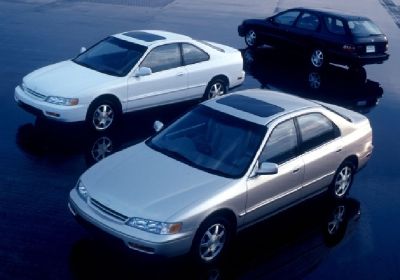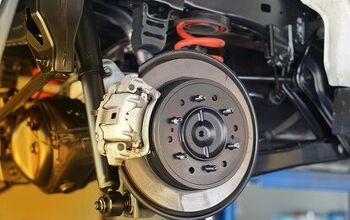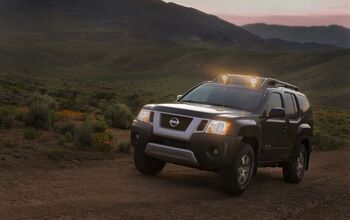Piston Slap: Making a Maintenance Accord

TTAC Commentator Daanii2 writes:
Hello, I enjoy your Piston Slap column. My question is this: my 1994 Honda Accord gets less than 10 miles per gallon. In fact, in mixed city and highway driving it gets about 7 miles per gallon. The figures are supposed to be 20 in city, 27 on highway, and 23 combined.
Is the car just drinking gas because it’s old? It has less than 100,000 miles on it. It has been maintained fairly well (although the paint has peeled and looks like crap). The idle is a bit rough, and seems to be getting rougher.
If something can be done to get better gas mileage, I’d like to do it. If it’s time to put the car out to pasture, though, I’ll do that too.
Sajeev answers:
Unless a train hits a Honda of this vintage, it can (and rightfully should) last forever. Don’t sweat the paint, many USA-made cars from the early 1990s have clear coat issues. I heard (but cannot verify) that a change in EPA paint booth regulations at this time caught all auto manufacturers with their pants down. No matter what, a quality aftermarket re-spray (scuff and shoot, as they say) shall get the cosmetics up to snuff.
Now to your somewhat loaded question about fuel economy. But first, a slap on the wrist: telling me that the car is “maintained fairly well” is quite meaningless. I can’t narrow down the list of things needed to keep an old car running at peak efficiency with that! So dig through your records and see what parts were replaced at what date.
Got your records handy? Good, here’s the kitchen sink of replacement items that you must account for: inspect and replace any gooey/cracked/stiff vacuum lines, normal tune up items (spark plugs, wires, PCV valve, fuel filter), oxygen sensor(s), and any associated engine adjustments that may come whilst changing a timing belt. If the basics don’t cure the problem, addressing a blocked catalytic converter or performing a compression test might be in your future.
So yes, something can be done. All of which is child’s play to any competent wrench running an honest shop. So tackle the list and the Honda should be a much, much happier machine. And you’ll have a reliable and enjoyable machine for a fraction of the price of any replacement vehicle, new or used. Good luck.
(Send your queries to mehta@ttac.com)

More by Sajeev Mehta
Latest Car Reviews
Read moreLatest Product Reviews
Read moreRecent Comments
- Jeff Self driving cars are not ready for prime time.
- Lichtronamo Watch as the non-us based automakers shift more production to Mexico in the future.
- 28-Cars-Later " Electrek recently dug around in Tesla’s online parts catalog and found that the windshield costs a whopping $1,900 to replace.To be fair, that’s around what a Mercedes S-Class or Rivian windshield costs, but the Tesla’s glass is unique because of its shape. It’s also worth noting that most insurance plans have glass replacement options that can make the repair a low- or zero-cost issue. "Now I understand why my insurance is so high despite no claims for years and about 7,500 annual miles between three cars.
- AMcA My theory is that that when the Big 3 gave away the store to the UAW in the last contract, there was a side deal in which the UAW promised to go after the non-organized transplant plants. Even the UAW understands that if the wage differential gets too high it's gonna kill the golden goose.
- MKizzy Why else does range matter? Because in the EV advocate's dream scenario of a post-ICE future, the average multi-car household will find itself with more EVs in their garages and driveways than places to plug them in or the capacity to charge then all at once without significant electrical upgrades. Unless each vehicle has enough range to allow for multiple days without plugging in, fighting over charging access in multi-EV households will be right up there with finances for causes of domestic strife.


































Comments
Join the conversation
Get that Accord to a Honda shop ASAP. End of story.
You're basically wasting half of every tankful of gas that goes into that Accord, so with a 16-gallon capacity (guessing) and a gas price of $2.75/gallon, you're wasting $22 every time you fill up. Like others have said, this is a no-brainer: Once you rule out gas theft and a tank leak, take it to a good shop and at least get a diagnosis. The gas savings are likely to pay for the repair in less than 10 tanks, not to mention the peace of mind you'll have.